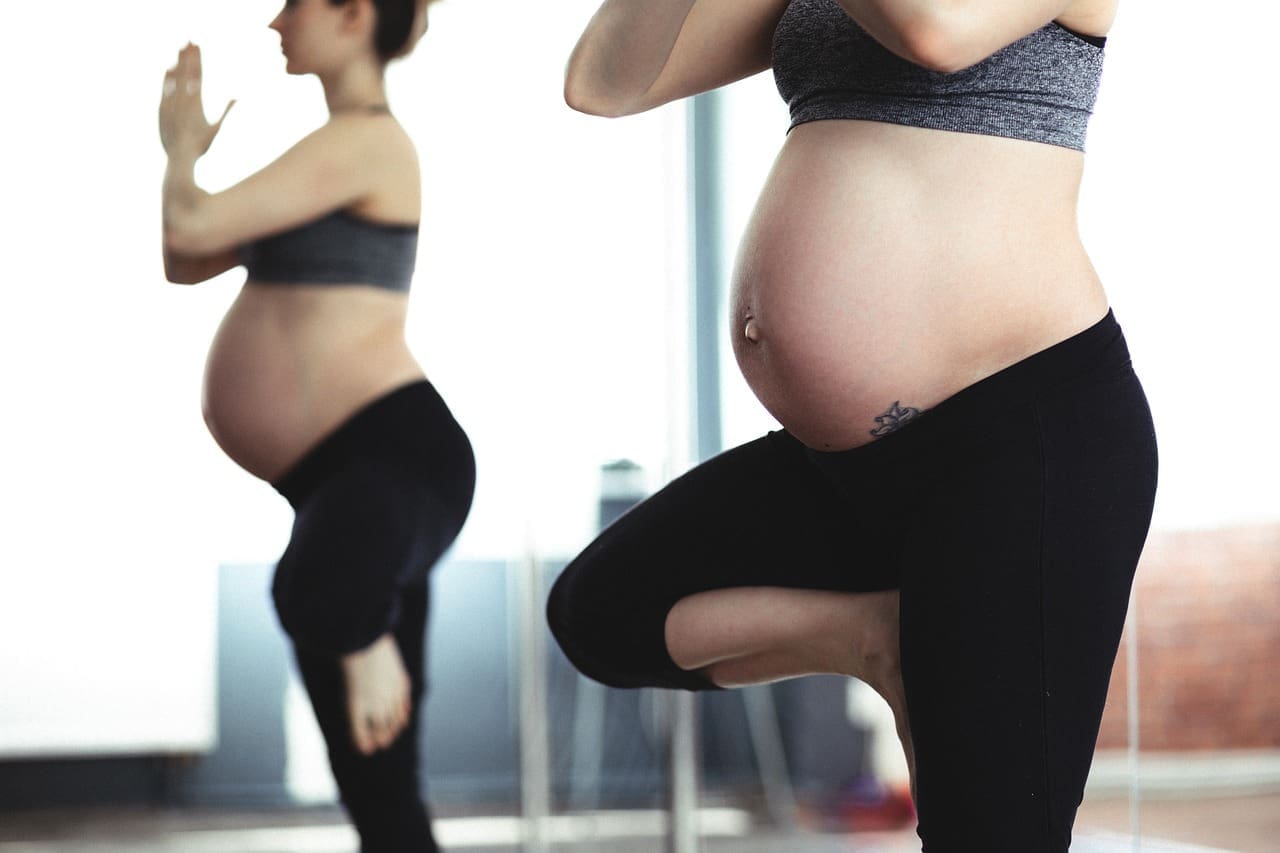Pregnancy is a transformative and exciting time in a woman’s life. It is essential to prioritize the health and well-being of both the mother and the baby. One way to achieve this is by maintaining a balanced exercise routine throughout pregnancy. Exercise offers numerous benefits that can contribute to a healthier and more comfortable pregnancy.
Regular physical activity during pregnancy has been shown to improve mood, reduce common pregnancy discomforts, and promote healthy weight gain. It can also help prepare the body for labor and delivery. However, it is crucial to find the right balance and choose exercises that are safe and appropriate for each stage of pregnancy.
Benefits of Exercise During Pregnancy
Regular exercise during pregnancy can have numerous benefits for both the mother and the baby. Firstly, it can help improve mood by releasing endorphins, the feel-good hormones, which can combat pregnancy-related mood swings and reduce stress and anxiety.
In addition, exercise can help reduce pregnancy discomforts such as back pain, swelling, and constipation. It promotes healthy weight gain, which is important for the well-being of both the mother and the baby. By maintaining a healthy weight, pregnant women can minimize the risk of complications such as gestational diabetes and high blood pressure.
Furthermore, engaging in regular exercise can help prepare the body for labor and delivery. Strengthening the muscles, especially the pelvic floor muscles, can enhance the ability to push during labor and aid in a smoother delivery. It can also improve stamina and endurance, which are essential during the physically demanding process of childbirth.
Safe Exercises for Pregnant Women
When it comes to exercise during pregnancy, low-impact activities are generally considered safe and beneficial for both the mother and the baby. Walking, swimming, and prenatal yoga are great options to stay active and maintain a healthy pregnancy. These exercises help improve cardiovascular health, strengthen muscles, and promote overall well-being.
However, it is crucial to consult with a healthcare provider before starting any exercise program. Every pregnancy is unique, and a healthcare provider can provide personalized guidance based on individual circumstances. They can assess any potential risks or limitations and recommend appropriate modifications to ensure a safe and effective exercise routine.
Exercises to Avoid During Pregnancy
When it comes to exercising during pregnancy, there are certain exercises that should be avoided to ensure the safety and well-being of both the mother and the baby. High-impact activities, such as running or jumping, can put excessive strain on the body and may increase the risk of injury. Contact sports, like soccer or basketball, should also be avoided as they can pose a risk of abdominal trauma.
Additionally, exercises that involve lying flat on the back should be avoided after the first trimester. This position can compress the vena cava, a major blood vessel, and reduce blood flow to the baby. It is recommended to modify these exercises by performing them in a reclined or inclined position to alleviate any potential risks.
It is important to consult with a healthcare provider before starting or continuing any exercise program during pregnancy. They can provide personalized guidance and recommendations based on individual health and pregnancy considerations. Remember, the goal is to maintain a safe and balanced exercise routine that supports the health of both the mother and the baby.
Modifying Exercise Routines for Each Trimester
As the pregnancy progresses, it is important to make modifications to exercise routines to ensure the safety and comfort of both the mother and the baby. Each trimester brings new changes to the body, and adapting exercises accordingly is crucial.
First Trimester: During the first trimester, it is important to listen to your body and make adjustments as needed. Focus on maintaining a moderate level of intensity and avoid exercises that put excessive strain on the abdomen. It is recommended to engage in low-impact exercises such as walking, swimming, and prenatal yoga. These exercises help in improving cardiovascular health and maintaining muscle tone without putting too much stress on the body.
Second and Third Trimester: As the pregnancy advances, modifications become even more necessary. It is important to avoid exercises that involve jumping or sudden changes in direction, as they can put strain on the joints and increase the risk of injury. Instead, focus on exercises that improve strength, flexibility, and posture. Prenatal Pilates and gentle strength training exercises with light weights or resistance bands can be beneficial. Additionally, practicing pelvic floor exercises can help in preparing the body for labor and delivery.
Remember, it is always important to consult with a healthcare provider before starting or modifying any exercise program during pregnancy. They can provide personalized guidance based on your individual circumstances and ensure that you are engaging in safe and suitable exercises throughout each trimester.
First Trimester
During the first trimester of pregnancy, it is crucial to pay close attention to your body’s signals and make necessary adjustments to your exercise routine. The key is to maintain a moderate level of intensity, taking into consideration the changes happening in your body. It is advisable to avoid exercises that put excessive strain on the abdomen, as it can potentially harm both you and your baby.
Instead, focus on low-impact exercises that promote cardiovascular health and overall well-being. Walking is a great option as it is gentle on the joints and can be easily adjusted to your comfort level. Prenatal yoga is another excellent choice, as it helps improve flexibility and strengthens the muscles needed for labor and delivery.
Remember, the first trimester is a critical period of development for your baby, so it is essential to prioritize safety and listen to your body’s needs. Consult with your healthcare provider to ensure that your exercise routine is appropriate for your individual circumstances.
Second and Third Trimester
As the pregnancy advances, it becomes increasingly important to make modifications to your exercise routine to ensure the safety of both you and your baby. During the second and third trimesters, it is crucial to avoid exercises that involve jumping or sudden changes in direction. These types of movements can put excessive strain on your joints and ligaments, which can lead to discomfort or injury.
Instead, focus on exercises that improve strength, flexibility, and posture. This can include gentle stretching, low-impact cardio exercises like swimming or stationary biking, and strength training with light weights or resistance bands. These exercises will help you maintain muscle tone, improve your overall fitness, and support your changing body as it prepares for labor and delivery.
Frequently Asked Questions
- 1. Can I exercise during pregnancy?
Yes, it is generally safe to exercise during pregnancy. However, it is important to consult with your healthcare provider before starting any exercise program to ensure it is appropriate for your individual needs.
- 2. What are the benefits of exercising during pregnancy?
Exercising during pregnancy can have numerous benefits. It can help improve mood, reduce pregnancy discomforts such as back pain and swelling, promote healthy weight gain, and prepare your body for labor and delivery.
- 3. What exercises are safe for pregnant women?
Low-impact exercises such as walking, swimming, and prenatal yoga are generally safe for pregnant women. These exercises help maintain cardiovascular fitness, strengthen muscles, and improve flexibility without putting excessive strain on the joints.
- 4. Are there any exercises to avoid during pregnancy?
Yes, certain exercises should be avoided during pregnancy. High-impact activities, contact sports, and exercises that involve lying flat on the back should be avoided to prevent potential harm to the baby.
- 5. How should I modify my exercise routine for each trimester?
As your pregnancy progresses, modifications to your exercise routine may be necessary. During the first trimester, focus on maintaining a moderate level of intensity and avoiding exercises that strain the abdomen. In the second and third trimesters, it is important to avoid exercises involving jumping or sudden changes in direction and instead focus on exercises that improve strength, flexibility, and posture.








Leave a Reply